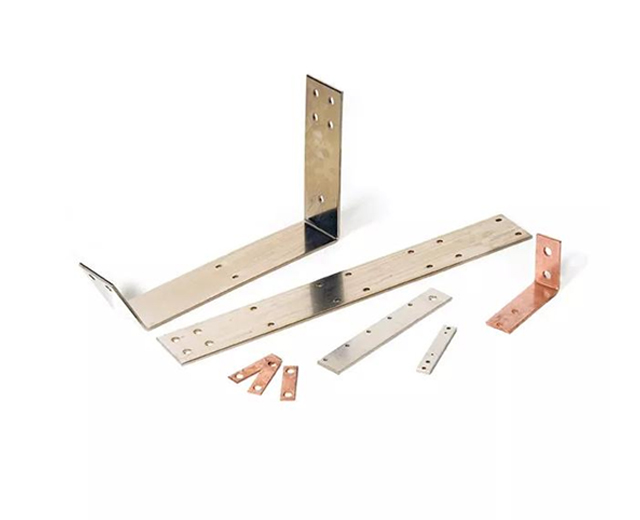2025-07-12 08:54:37
The 3000A Copper Busbar is a high-current conducting component widely used in electrical power distribution systems. As a flat strip or bar made of pure copper or copper alloys, it serves as a critical element for efficient power transmission in various industrial and commercial applications. This article explores its technical specifications, key characteristics, common applications, and proper maintenance procedures.

The 3000A copper busbar possesses several distinctive features that make it ideal for high-current applications:
High Conductivity: With an electrical conductivity of 100% IACS (International Annealed Copper Standard) for pure copper, or 85-98% IACS for copper alloys, it ensures minimal energy loss during power transmission.
Current Carrying Capacity: Designed to handle 3000 amperes continuously, with short-circuit withstand capabilities reaching 50-100 kA for durations up to 1-3 seconds, depending on specific design parameters.
Thermal Performance: Features a low temperature coefficient of resistance (0.00393/°C at 20°C) and can operate at temperatures up to 105°C continuously, with peak tolerance reaching 250°C for short durations.
Mechanical Strength: Tensile strength ranges from 200-400 MPa depending on the alloy composition and temper, with a typical hardness of 80-110 HV (Vickers hardness).
Corrosion Resistance: When properly treated or alloyed, demonstrates excellent resistance to atmospheric corrosion, with oxidation rates below 0.002 mm/year in standard environments.
Dimensional Specifications: Common cross-sections range from 100x10 mm to 150x12 mm for single bars, with standard lengths of 3 or 6 meters, and surface finishes achieving 0.8-1.6 μm Ra roughness.
The 3000A copper busbar finds extensive use in various electrical systems requiring high-current capacity and reliable performance:
Electrical Substations: Used in main power distribution boards and switchgear assemblies for utility-scale power transmission, typically handling voltages from 400V to 36kV.
Industrial Power Distribution: Implemented in manufacturing facilities with heavy machinery, where current requirements often exceed 2500A, particularly in steel mills, aluminum smelters, and chemical plants.
Data Centers: Serves as primary busway in high-density server farms, supporting power distribution systems with 480V/600V configurations and fault currents up to 65kA.
Renewable Energy Systems: Used in solar farm combiner boxes and wind turbine converters, handling DC currents up to 3000A at 1000-1500VDC.
Marine and Offshore: Employed in shipboard power systems due to superior corrosion resistance, meeting IEC 60092-350 standards for marine applications.
Railway Electrification: Integrated into traction power substations, supporting 750V DC or 25kV AC systems with vibration-resistant mounting configurations.
Proper maintenance of 3000A Copper Busbars is essential for ensuring long-term reliability and safety:
Visual Inspection: Conduct quarterly inspections for signs of oxidation, discoloration, or thermal stress. Check for any color changes beyond normal patina (light brown to dark brown is acceptable; black or green indicates excessive oxidation).
Contact Resistance Measurement: Perform annual testing using micro-ohmmeter to ensure joint resistance remains below 20 μΩ for bolted connections and 10 μΩ for welded joints.
Thermal Monitoring: Use infrared thermography during peak load conditions to identify hot spots, with temperature differentials exceeding 15°C above ambient indicating potential issues.
Cleaning Procedures: For surface oxidation, use non-abrasive copper cleaning solutions with pH between 6-8, followed by application of antioxidant compound meeting ASTM B813 standards.
Torque Verification: Check bolted connections annually with calibrated torque wrench, maintaining values between 50-70 Nm for M12 hardware, as specified by IEC 61439 standards.
Corrosion Protection: In harsh environments, apply protective coatings such as tin plating (5-10 μm thickness) or silver plating (8-12 μm), with recoating recommended every 5-7 years.
Vibration Checks: For installations subject to mechanical vibration, inspect mounting hardware and supports every 6 months, ensuring deflection remains below 0.5 mm under operational loads.
Proper installation of 3000A Copper Busbars requires attention to several technical factors:
Clearance Requirements: Maintain minimum phase-to-phase clearance of 50 mm for 600V systems, increasing to 300 mm for 15kV applications as per IEEE C37.20 standards.
Bending Radius: Observe minimum bending radius of 2x thickness for hard-drawn copper and 1x thickness for annealed copper to prevent work hardening and cracking.
Support Spacing: Install supports at intervals not exceeding 600 mm for horizontal runs and 900 mm for vertical runs to prevent sagging under electromagnetic forces during fault conditions.
Joint Preparation: Ensure contact surfaces achieve 80% metallic contact area, with surface flatness within 0.05 mm over 100 mm length for optimal current transfer.